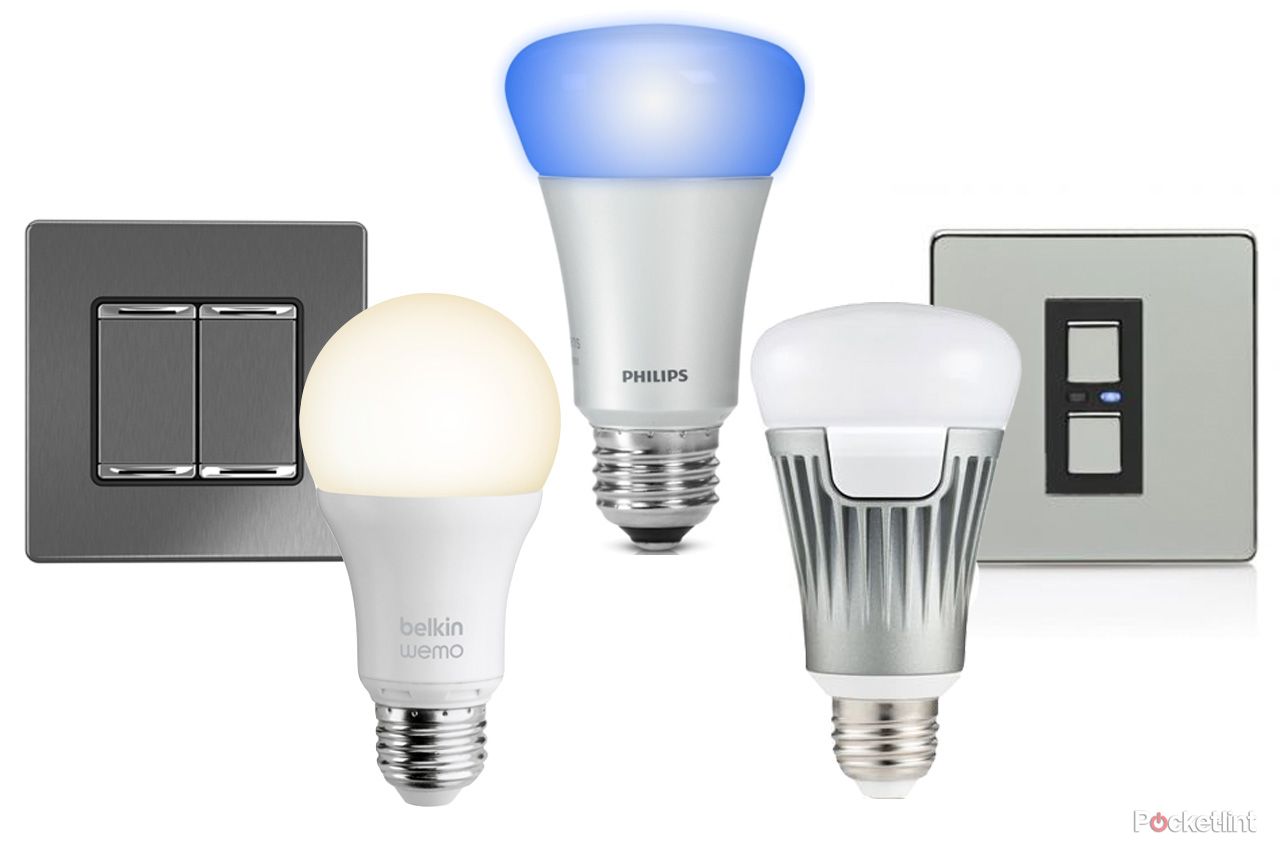Just as smart heating is a blanket term used to describe connected heating systems that can be controlled using a smartphone, smart lighting is the umbrella term that connected lighting systems fall under.
Philips were one of the first to make connected lighting mainstream with its Hue system, allowing users to control individual lights, as well as groups of lights from a dedicated app on their smartphone or tablet. Philips Hue has an entire spectrum of colours to select from and it offers all sorts of fancy features such recreating a sunset. It is no longer the only connected lighting solution available though.
Several companies have jumped on the smartphone-controlled light bulb wagon, including Samsung, LG and perhaps surprisingly, wearable company Misfit, taking connected light bulbs further than just smartphone control and into fitness tracker control too. Smart lighting is well and truly here but why should you invest? What is the benefit of changing every bulb in your house, or even just a few, into connected ones? We are about to tell you.
Remote control
Remote control is the most obvious reason to invest in smart lighting and it's probably enough of a reason for most to justify the cost. Replacing every light bulb in your home is not going to be cheap, no matter what system you opt for, but that isn't to say you can't replace one or two to begin with. It might be that you start with the bedroom or the living room so that you never have to get out of bed or off the sofa just to turn the lights off again, for example.
Each connected lighting system available is different, but they will all allow you to turn your lights on or off from your smart device. All the various systems have their own sets of features, some offer colours, while others provide varying shades of white light, but they will all provide remote control so you can turn your lights on or off from wherever you are as long as you have an internet connection.
Security
Security is a follow-on reason from remote control, but it is still worthy of its own section. In the past, and probably still today, some of us had a light at the front or rear or our house that activated as someone approached it. The idea of these was of course to scare off any unwelcome visitors, and we don't mean the mother-in-law. Connected lighting takes that warning light to an entirely different level.
Some of the connected lighting systems available allow users to set up schedules for their lights to turn on and off at specific times on specific days. Therefore, if you are on holiday but you want it to look like someone is home, it's easy to do if you have connected lights - Macaulay Culkin is definitely someone who could have done with smart lights in Home Alone. You'll be able to change the schedules so you don't have the lights going on and off at the same time each day and remote control also means you can turn them on and off manually whenever you feel like it.
Mood lighting
Connected lighting is fabulous for parties, as well as if you are just looking to create a certain mood in your living room kitchen, or even the bedroom. A dimmer switch can only manage so much, and it certainly can't flash in time with the music you are playing, or change colour through an entire spectrum, which some connected lighting systems like Philips Hue can.
Not all systems are as advanced as Philips Hue, so it's worth checking the features of the system you are buying, but no house party would be quite the same once you have connected lights. Aside from mood lighting or party lighting however, connected lights are fun and if you like a gadget, they are certainly up there with the cool, gadgety things you can buy for your home now.
Save money
Saving money might seem like a tenuous reason to invest in smart lighting, given how much the systems can potentially cost in the first place. If you take the initial layout out of the equation though, you're not likely to be leaving any lights on that don't need to be on if you have connected lighting.
It's easy to not bother getting up to turn the kitchen light off when you have sat down to watch TV, or the bathroom light if you have gone downstairs for example, and many of us probably don't even realise we have left the light on until we see it a while later. With most connected lighting systems however, you can see which lights are on from the comfort of your bed or sofa, and then switch them off accordingly to make sure less energy is wasted. Every little helps as Tesco would say.
Customisation with IFTTT
We have mentioned IFTTT in previous smarthome features and like connected heating systems, there are some smart lighting solutions that are compatible with the service. In case you weren't aware, IFTTT is based on the statement: If This Then That, and if a smart lighting solution is compatible, it will mean you can create recipes to customise situations that work for you.
For example, you could set the sun setting as the trigger to turn all the lights downstairs on or you could get your lights to flash red when you get a missed call on your smartphone for example. You could even take it into smart cameras and find a compatible device here too, enabling you to set up a recipe that would trigger the lights when the camera detects movement. There are multiple possibilities, all of which you can create via the IFTTT app. Be sure to check the smart lighting system you are looking at buying is compatible if you want to go down this route though, as not all are yet.

